Introduction
Sichuan Province, renowned for its bold flavors and fiery cuisine, has gifted the world with countless culinary treasures. Among these, Bobo Chicken (钵钵鸡) stands as a beloved street food icon, celebrated for its harmonious blend of textures, aromas, and the tantalizing interplay of spice and numbness that defines Sichuan peppercorns. This dish, often served cold on skewers and bathed in a vibrant chili oil broth, transcends mere sustenance—it is a cultural emblem, a testament to the region’s culinary ingenuity. In this exploration, we delve into the origins, ingredients, preparation, and cultural significance of Bobo Chicken, uncovering why this humble street snack has captivated palates globally.
A Historical Tapestry: Origins and Evolution
The story of Bobo Chicken begins in the lush landscapes of Leshan, a city in southern Sichuan, where legend traces its roots to the late Qing Dynasty. Initially, it was a peasant dish, crafted from leftover ingredients and served in earthenware pots—bobo (钵钵) in Chinese, referring to the ceramic vessels traditionally used to hold the broth. Farmers and laborers would skewer bite-sized morsels of meat and vegetables, marinating them in a fragrant, spicy broth to preserve and flavor the ingredients. Over time, this practical dish evolved into a street food sensation, with vendors perfecting the art of balancing heat, umami, and texture.
Today, Bobo Chicken has transcended its humble beginnings, gracing menus in high-end restaurants and international food festivals. Yet, its essence remains rooted in tradition, with each skewer telling a story of Sichuan’s culinary heritage.
The Anatomy of Flavor: Ingredients and Preparation
At its core, Bobo Chicken is a symphony of simplicity and complexity. The dish comprises three primary components: the skewers, the broth, and the garnishes.
-
The Skewers: A Canvas of Ingredients
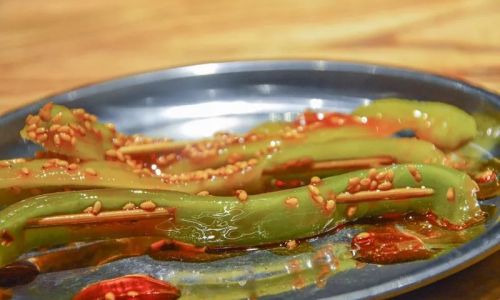
- Proteins: Classic choices include tender chicken thigh, giblets (gizzard, liver, heart), and skin, each contributing unique textures. Modern adaptations may feature beef, pork, or seafood, but purists argue that chicken’s mild flavor best complements the broth’s intensity.
- Vegetables: Crisp lotus root, earthy potatoes, slender enoki mushrooms, and kelp provide refreshing contrast. Tofu products like doufu pi (tofu skin) and yuba (bean curd sheets) absorb the broth’s essence, becoming flavor-packed delights.
- Novelty Additions: Some vendors innovate with quail eggs, boiled peanuts, or even fruit like pineapple, though traditionalists favor simplicity.
-
The Broth: The Soul of the Dish
- Chili Oil Base: A blend of crushed Sichuan peppercorns, star anise, cinnamon, and dried chilies steeped in oil forms the broth’s fiery foundation. The oil is strained, leaving behind a fragrant, crimson liquid.
- Aromatics: Fresh garlic, ginger, and scallions are sautéed to release their aromas before being combined with the chili oil.
- Seasonings: Soy sauce, vinegar, sugar, and sesame paste are added to balance the heat with umami and tang. The broth is then thinned with chicken or bone stock, creating a viscous, flavorful coating for the skewers.
-
Assembly and Serving
Skewers are blanched until cooked through, then submerged in the cooled broth for hours, allowing the flavors to meld. Traditionally served in the bobo pot, the dish is garnished with sesame seeds, crushed peanuts, and chopped cilantro, offering visual and textural appeal.
The Art of Blanching: Preserving Texture and Flavor
Blanching is a critical step in Bobo Chicken preparation. Ingredients are cooked separately to ensure each item retains its ideal texture:
- Chicken: Simmered gently in water with ginger and scallions to remove impurities, then shocked in ice water to lock in tenderness.
- Vegetables: Parboiled to achieve crisp-tender perfection, avoiding mushiness.
- Tofu Products: Lightly blanched to maintain their structure while absorbing the broth.
This meticulous process ensures that every bite offers a harmonious contrast between the silken broth and the ingredients’ varied textures.
Cultural Significance: More Than Just a Meal
Bobo Chicken is deeply intertwined with Sichuan’s social fabric. Historically, it was a communal dish, shared among laborers during breaks or at festive gatherings. Today, it remains a staple of hao chi jie (food streets), where vendors’ stalls emit the tantalizing aroma of chili oil, drawing crowds seeking an authentic taste of Sichuan.
The dish’s popularity also stems from its versatility. Served as an appetizer, snack, or light meal, it accommodates diverse preferences—diners can select skewers à la carte, making it ideal for group dining. The act of dipping skewers into the communal broth fosters connection, turning a simple meal into a shared experience.
Regional Variations: Adaptations Across China
While Sichuan’s version is the gold standard, Bobo Chicken has inspired regional adaptations:
- Chongqing: A spicier iteration, with added fermented bean paste and doubanjiang (broad bean chili sauce).
- Guangdong: Milder flavors, substituting chili oil with a soy-based sauce and emphasizing seafood skewers.
- Northern China: Heartier additions like lamb or wheat gluten (mianjin) cater to colder climates.
These variations highlight the dish’s adaptability, proving that Bobo Chicken’s essence—texture, spice, and community—transcends borders.
The Spice Factor: A Numbing Sensation
Central to Bobo Chicken’s allure is the mala (numbing-spicy) flavor profile, a hallmark of Sichuan cuisine. Sichuan peppercorns, unrelated to black pepper or chili, contain hydroxy-alpha-sanshool, a compound that induces a tingling, numbing sensation on the tongue. Paired with fiery dried chilies, this duo creates a sensory adventure that lingers long after the last bite.
For the uninitiated, the heat can be daunting. However, vendors often provide a “spice meter,” allowing diners to customize their broth’s intensity. Some modern stalls even offer separate dipping sauces, like garlic-vinegar or peanut butter, to temper the fire.
Health and Nutrition: A Balancing Act
While Bobo Chicken is undeniably delicious, its nutritional profile warrants consideration:
- Protein: Chicken skewers offer lean protein, essential for muscle repair.
- Fiber and Vitamins: Vegetables like lotus root and enoki mushrooms contribute dietary fiber and vitamins.
- Sodium and Fat: The broth’s high sodium and oil content mean moderation is key, particularly for those with hypertension or cholesterol concerns.
Health-conscious diners may opt for vegetable-heavy skewers and request less oil, though purists insist that the broth’s richness is non-negotiable.
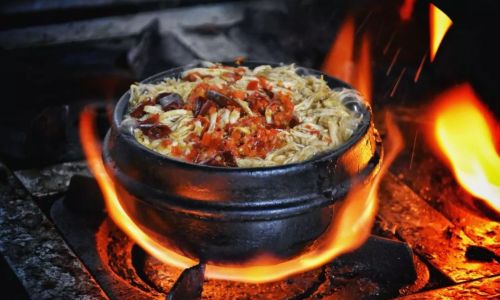
Bobo Chicken at Home: A Beginner’s Guide
Recreating Bobo Chicken at home allows for creative experimentation. Here’s a simplified recipe:
-
Broth Base:
- Simmer 4 cups of chicken stock with 3 star anise, a cinnamon stick, and a slice of ginger for 30 minutes.
- In a separate pan, heat 1 cup of vegetable oil until smoking. Remove from heat and stir in 2 tbsp Sichuan peppercorns, 1 tbsp crushed red pepper flakes, and 3 minced garlic cloves. Let steep for 1 hour, then strain.
- Combine the strained oil with ¼ cup soy sauce, 2 tbsp black vinegar, 1 tbsp sugar, and 2 tbsp sesame paste. Mix into the cooled stock.
-
Skewers:
- Blanch 1 lb of chicken thigh, 1 cup of lotus root slices, and 1 cup of enoki mushrooms until cooked. Thread onto skewers.
- Submerge skewers in the broth for 2–4 hours.
-
Serve:
Garnish with sesame seeds, crushed peanuts, and cilantro. Pair with steamed rice or cold beer.
The Global Appeal: From Street Stalls to Fine Dining
In recent years, Bobo Chicken has gained international acclaim, appearing on menus in New York, London, and Tokyo. High-end restaurants reinterpret the dish with premium ingredients like Wagyu beef or truffle-infused broth, while food trucks cater to adventurous eaters seeking authentic flavors.
This global embrace speaks to the dish’s universal appeal—its balance of heat, texture, and communal joy resonates across cultures.
Sustainability and Ethics: A Modern Consideration
As Bobo Chicken’s popularity grows, so does scrutiny over its environmental impact. Traditional preparations often use chicken offal, a sustainable choice that minimizes waste. However, mass production may prioritize convenience over ethics, with vendors opting for factory-farmed meat or excessive plastic packaging.
Conscientious diners can support vendors who source locally, use organic ingredients, and employ biodegradable skewers, ensuring that this culinary treasure remains both delicious and ethical.
Conclusion: A Timeless Delight
Bobo Chicken is more than a dish—it is a living artifact, a testament to Sichuan’s culinary mastery and the enduring power of street food. From its humble origins in Leshan’s markets to its current global fame, it continues to evolve while honoring tradition. Whether savored in a bustling Chengdu night market or recreated in a home kitchen, Bobo Chicken invites diners to experience the thrill of mala, the joy of shared meals, and the timeless art of Sichuanese flavor. As the world embraces this spicy skewer, one thing remains certain: the bobo pot’s siren song will endure, one skewered bite at a time.
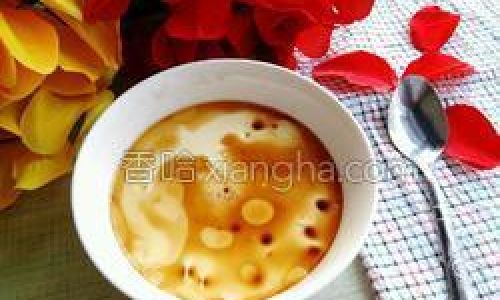
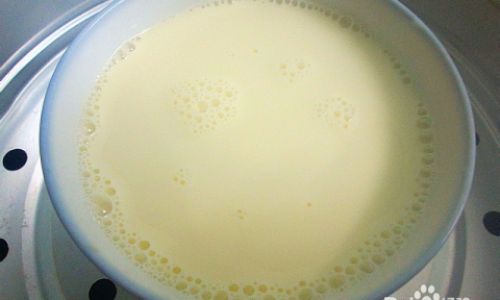
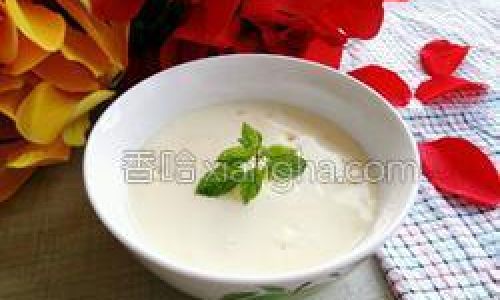


0 comments